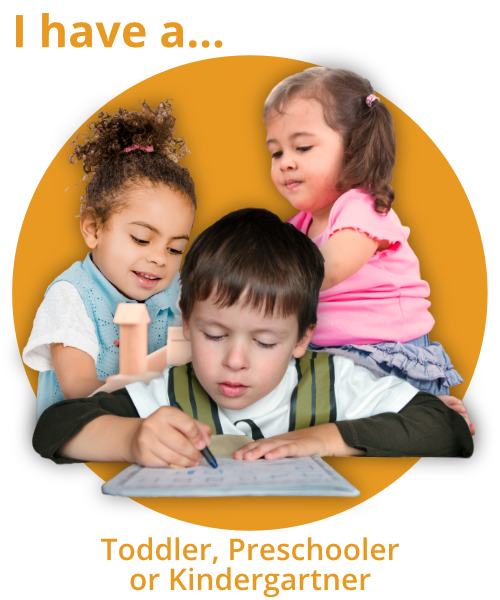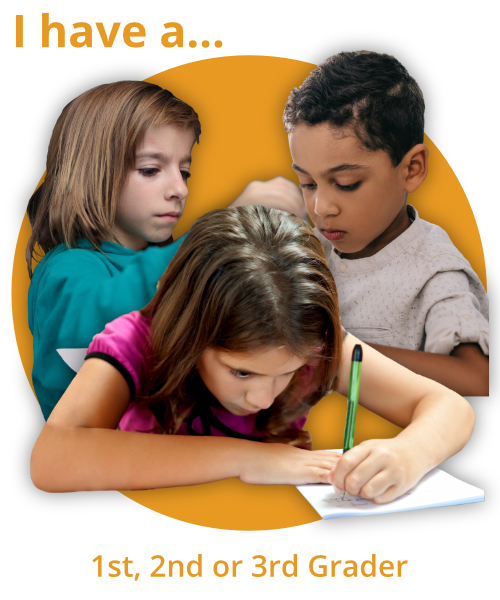Eat a Montessori Lesson
Botany is something you can study at your kitchen table OR in a garden outdoors. Getting kids involved in knowing where their food comes from by engaging the senses is a Montessori lesson every family can easily teach. Here's how.
I'm Aubrey Hargis, Montessorian and mom of two. I believe that children can teach themselves - and that our role as parents is not as necessary as we think it is! That doesn't mean we aren't NEEDED by our children. In fact, the more our children learn about the world by experiencing the world, the more we can model for them what it looks like to be a curious human being. And in the process? We end up learning, too…
because education is a journey we take with our children, and the opportunities for learning start over every day.
Hey Sweet Friend
I have some fun activities to share with you today about DELICIOUS botany! But I would also like to take this theme and invite you to think about the concept of nurturing. We have opportunities as parents to learn alongside our children-- and this doesn't just mean learning a bunch of botany facts! We can think about a concept that a child wants to learn, and then figure out how to apply it to our lives. This is something we do often in my membership group for homeschooling mamas, Constellation. We will take a theme, and then expand it, stretch it until we can really think about how we can apply that metaphor to what we do and how we interact with our children.
With botany, we might shift away from the edible part, and towards what it means to grow and the metaphors attached to that concept. What does it mean to grow? What does something need in order to grow? Does something need to be nurtured to grow? From there, we can continue: How are we nurturing ourselves? You are probably ALREADY doing a wonderful job of nurturing your child...but what about yourself? How are you modeling for your child what it means to continue to care for yourself, feed yourself, and let yourself grow?
If you’re interested in supporting your development and growth WHILE you nurture your child, you should consider my membership program, Constellation!
Meet Debora
Each week, I like to feature someone who is a part of our Child of the Redwoods community! The participants in this community are such a huge part of what makes it special. This week, we’re sharing advice and inspiration from Homeschool of the Redwoods Alumna and Constellation member Debora, Montessori Mom of 2! You can learn more about Debora here.
A Montessori Lesson Straight from the Refrigerator or Garden!
Whether you are in the Northern Hemisphere, where Spring is approaching, or the Southern Hemisphere, where you are nearing Fall, you are adjacent to a time of year where a lot of changes are happening in the plants around you. Things are either STARTING to grow, or have grown. Leaves are either budding, or falling. It is a great time to hone in on botany, because children often already have a natural curiosity about the changes that are occurring.
Botany is actually a very important part of the Montessori curriculum at all age levels: toddler, primary, lower elementary, and up -- because we are really trying to get children to connect with their environment. We don't want them to take where their food comes from for granted.
In the classroom, this often takes special planning--arranging time to use a kitchen or bringing special foods into the classroom. At home, you are already preparing food for and hopefully with your children multiple times a day, every day! So the opportunities will just pop up naturally.
First: Get to Know Your Food Sensorially
With young toddlers, you want to start by bringing their attention to one particular vegetable or fruit; I loved to do this in my toddler classroom with a pineapple. We brought the pineapple to the table, and together we smelled it, we felt it, and just explored and described it. Note the qualities; it’s a little green, sometimes it has leaves on top, the outside can feel a little rough and spiky! When we smell it, the top of the pineapple doesn't smell as much as the bottom of the pineapple, where you can really smell the sweetness. You don’t need to talk the entire time--let them feel and explore it in its WHOLE form, before you open it up to eat it.
Maria Montessori wanted children to have a sensory impression first. When children are toddlers, their senses are getting primed for this work! They have not yet learned how to focus their attention on a single sense at a time--and so it's our job to invite them to do this work, and model what it looks like to explore something with each sense.
Then: Crown the Experience With Language
After a sensory impression has been made of ANY growing plant--a dandelion or a pineapple or a potato, whatever you have access to -- then you're going to start with talking about the parts of the plant. You could do a basic dissection, or just start with the parts that are on the outside--you don’t need a printable! Parts printables can be nice, but I don't think of that as the next approach in the sequence.
Before you shift to cards, feel and explore and identify the parts of the real thing. Touch the skin of the potato, and name it: this is the skin! You might associate that YOU have skin, too, and touch and explore the difference between your skin and the potato's skin. You would do it for each part of the potato. This is a very simple lesson that allows the child to have the sensory experience and associates it with the language needed to talk about the plant.
Next: Try Categorizing, Comparing, and Contrasting!
A nice place to start with this would be with roots that we eat: potatoes, ginger, turnips, beets, carrots. You can explore them together; talk about the different ways that you eat them. You can talk about the kind of root that it is: beets, turnips, and carrots are all taproots. You can name it and label it: this is a taproot. Then you can even cut it up and look inside it; talk about how it soaks up the water from the dirt underneath it, and how it grows down into the earth.
You might contrast that with other roots: fibrous roots, like those that grow from wheat or from grasses, or adventitious roots, or tubers, rhizomes, or bulbs. You can also compare these to:
Flowers we eat (like cauliflower, broccoli, nasturtium, and artichoke)
Stems we eat (like celery, asparagus, or rhubarb)
Leaves we eat (like lettuce, cabbage, kale, and spinach)
Seeds we eat (like peas, corn, beans, and various grains)
Fruits we eat (like squash, apples, tomatoes - anything that grows from a flower and has internal seeds)
Finally: Figure Out How They Grow!
Once you’ve explored each category, compared and contrasted them, you might want to give propagation a try! You can start with seeds you find inside your food. Many foods (not all) that you buy in a grocery store have seeds that will sprout. You may have better luck with organic fruits--sometimes other fruits are modified not to reproduce. You can also try regrowing food--this works well with green onion, and you can also try it with celery, romaine lettuce (if you get a full head), or leeks.
You are going to be amazed when you have done this with your child! Children are so absorbent that they're going to be popping back at you with all kinds of interesting information about the foods that they eat, diving deeper into where they come from, and the nutrition they provide. It’s an opportunity to connect the child deeply to their food and their world while also growing their curiosity.
Gratitude
I am so grateful that I have been able to have experiences with my children growing a little garden. I have lived somewhere that I was able to grow a large garden. Still, it seems like every year we're able to grow a little something, even if it's just some little herb that we're growing indoors for a little sunflower that we're planting outside.
I am grateful for it because it helps me to feel more connected to the earth and the food that I eat, and it helps me to know that my children are not going to take the food that they eat for granted either.


